Giovanni VI Grimani (8 July 1506, Venice - 3 October 1593, Venice) was an Italian bishop and patriarch of Aquileia.
Nephew of Cardinal Domenico Grimani, brother of Marino Grimani and a member of the Venetian noble family of the Grimani, he was the fourth son of Gerolamo Grimani and Elena Priuli. He was bishop of Ceneda from 1520 to 1531 and from 1540 to 1545.
He served as patriarch of Aquileia between 1545 and 1550 and 1585 and 1593. As patriarch he initiated two diocesan synods in 1565 and 1584. [1] He was not made a cardinal since he was suspected of welcoming some Lutheran ideas contrary to Catholic orthodoxy. He defended himself in person against these accusations in person at the Council of Trent in 1563.
An educated man and keen collector of classical art, he also commissioned the expansion of the Palazzo Grimani di Santa Maria Formosa, in which he gathered important artworks. He also promoted cultural development in the city.

The Latin Patriarchate of Constantinople was an office established as a result of the Fourth Crusade and its conquest of Constantinople in 1204. It was a Roman Catholic replacement for the Eastern Orthodox Ecumenical Patriarchate of Constantinople and remained in the city until the reconquest of Constantinople by the Byzantines in 1261, whereupon it became a titular see. The office was abolished in 1964.

The Patriarch of Venice is the ordinary bishop of the Archdiocese of Venice. The bishop is one of only four patriarchs in the Latin Church of the Catholic Church. The other three are the Patriarch of Lisbon, the Patriarch of the East Indies and the Latin Patriarch of Jerusalem. Presently, the only advantage of this purely formal title is the bishop's place of honor in papal processions. In the case of Venice, an additional privilege allows the patriarch, even if he is not a cardinal, the use of the colour red in non-liturgical vestments. In that case, the red biretta is topped by a tuft, as is the custom with other bishops who are not cardinals.

Domenico Grimani was an Italian nobleman, theologian and cardinal. Like most noble churchman of his era Grimani was an ecclesiastical pluralist, holding numerous posts and benefices. Desiderius Erasmus dedicated his Musica to Grimani.
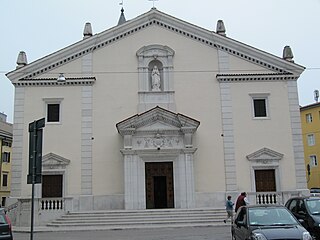
The Archdiocese of Gorizia (Latin: Archidioecesis Goritiensis is a Latin archdiocese of the Catholic Church in Italy. The archiepiscopal see of Gorizia was founded in 1751 when the Patriarchate of Aquileia was abolished, and its territory divided between two new dioceses, Udine and Gorizia. The diocese of Gorizia was suppressed in 1788 for the creation of the Diocese of Gradisca and re-established in 1791 as the Diocese of Gorizia e Gradisca. It was raised again to a metropolitan archdiocese in 1830.
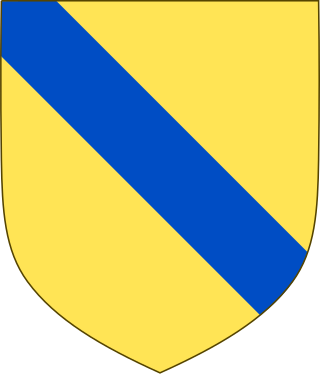
The House of Morosini was a powerful Venetian noble family that gave many doges, statesmen, generals, and admirals to the Republic of Venice, as well as cardinals to the Church.

The Patriarchate of Aquileia was an episcopal see and ecclesiastical province in northeastern Italy, originally centered in the ancient city of Aquileia, situated near the northern coast of the Adriatic Sea. It emerged in the 4th century as a metropolitan province, with jurisdiction over the Italian region of Venetia et Histria. In the second half of the 6th century, metropolitan bishops of Aquileia started to use the patriarchal title. Their residence was moved to Grado in 568, after the Lombard conquest of Aquileia. In 606, an internal schism occurred, and since that time there were two rival lines of Aquileian patriarchs: one in New Aquileia (Grado) with jurisdiction over the Byzantine-controlled coastal regions, and the other in Old Aquileia. The first line (Grado) continued until 1451, while the second line continued until 1751. Patriarchs of the second line were also feudal lords of the Patriarchal State of Aquileia. A number of Aquileian church councils were held during the late antiquity and throughout the middle ages. Today, it is an titular archiepiscopal see.

Giovanni Battista Zeno , was the son of Niccolo di Tomà Zeno and Elisabetta Barbo, a sister of Pietro Barbo, who became Pope Paul II in August 1464. He was a bishop and a cardinal of the Catholic Church.

The House of Grimani was a prominent Venetian patrician family, including three Doges of Venice. They were active in trade, politics and later the ownership of theatres and opera-houses.
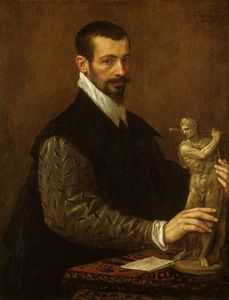
Tiziano Aspetti was an Italian sculptor of the Renaissance. He was born in Padua and active mainly there and in Venice. He completed both large and small sculpture in bronze. Among his large works are bronze statues in the façade of San Francesco della Vigna and of Saint Anthony and many other sculptural decorations for the Basilica of Sant'Antonio of Padua.

The Diocese of Vittorio Veneto is a Latin diocese of the Catholic Church in northern Italy, with its see in Vittorio Veneto. It was historically known as Diocese of Ceneda, the name being changed in 1939.

The Diocese of Concordia-Pordenone is a Latin diocese of the Catholic Church situated in northeastern Italy, at the northern end of the Adriatic Sea, between Venice and Udine. Since 1818, Concordia Veneta, has been a suffragan of the Archdiocese of Venice. Bishop Andrea Casasola attended the Provincial Council of the Provincia Veneta in October 1859 as a suffragan of the Patriarch of Venice, Cardinal Giuseppe Luigi Trevisanato. The name of the diocese was changed to its present form in 1971.
Tolberto III da Camino (1263–1317) was an Italian nobleman and military leader, a member of the Da Camino family.
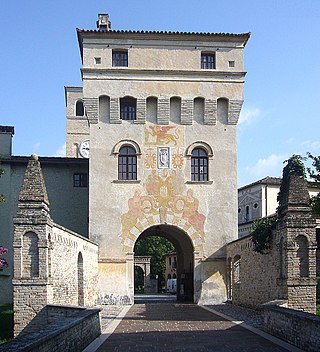
The Abbey of Santa Maria in Sylvis is a monastery in the centre of Sesto al Reghena, in the province of Pordenone, Northeastern Italy.

The Delfin family, singular Dolfin or Delfin[o], is a prominent noble family of Venice, part of the twelve original noble lineages of the Republic, known as the "apostolic families", thought to have elected the first Doge of Venice in the year 697 a.C.

Giovanni Dolfin was an Italian Catholic Cardinal, writer and playwright, Patriarch of Aquileia from 1657 to his death.
Francesco Vendramin (1555–1619) was Venetian aristocrat and ambassador. He was Patriarch of Venice from 1605 to his death, and a Cardinal from 1615.
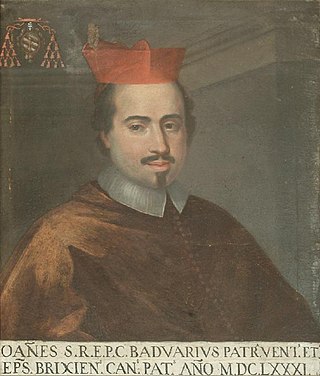
Giovanni Alberto Badoer or Gianalberto Badoaro was a Venetian Catholic cardinal who served as Patriarch of Venice and Bishop of Brescia.
Paolo Bisanti was Bishop of Kotor and later Vicar of the Patriarchate of Aquileia where he played an important role in the Catholic reform.
Paolo Borgasio was Bishop of Nemosia (Limosol) from 1516 to 1539.